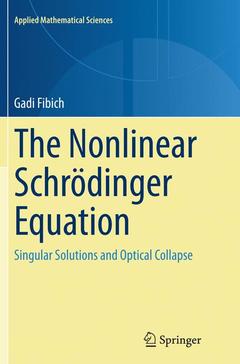Description
The Nonlinear Schrödinger Equation, Softcover reprint of the original 1st ed. 2015
Singular Solutions and Optical Collapse
Applied Mathematical Sciences Series, Vol. 192
Author: Fibich Gadi
Language: English
Subjects for The Nonlinear Schrödinger Equation:
Publication date: 10-2016
Support: Print on demand
Publication date: 03-2015
862 p. · 15.5x23.5 cm · Hardback
Description
/li>Contents
/li>Biography
/li>Comment
/li>
This book is an interdisciplinary introduction to optical collapse of laser beams, which is modelled by singular (blow-up) solutions of the nonlinear Schrödinger equation. With great care and detail, it develops the subject including the mathematical and physical background and the history of the subject. It combines rigorous analysis, asymptotic analysis, informal arguments, numerical simulations, physical modelling, and physical experiments. It repeatedly emphasizes the relations between these approaches, and the intuition behind the results.
The Nonlinear Schrödinger Equation will be useful to graduate students and researchers in applied mathematics who are interested in singular solutions of partial differential equations, nonlinear optics and nonlinear waves, and to graduate students and researchers in physics and engineering who are interested in nonlinear optics and Bose-Einstein condensates. It can be used for courses on partial differential equations, nonlinear waves, and nonlinear optics.
Gadi Fibich is a Professor of Applied Mathematics at Tel Aviv University.
?This book provides a clear presentation of the nonlinear Schrodinger equation and its applications from various perspectives (rigorous analysis, informal analysis, and physics). It will be extremely useful for students and researchers who enter this field.?
Frank Merle, Université de Cergy-Pontoise and Institut des Hautes Études Scientifiques, France
Gadi Fibich is a Professor of Applied Mathematics at Tel Aviv University.

